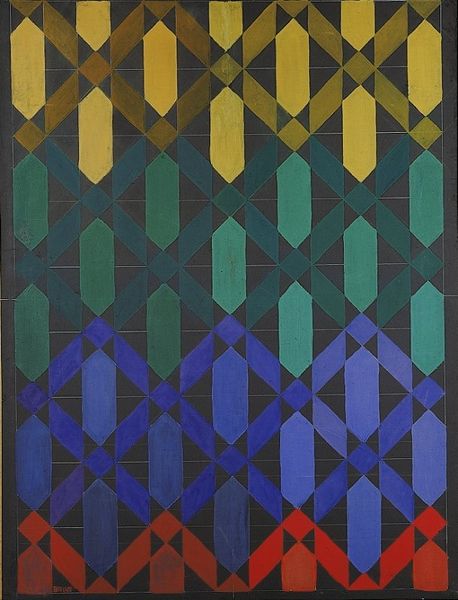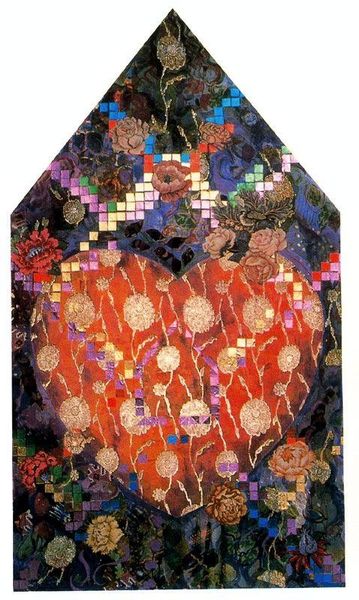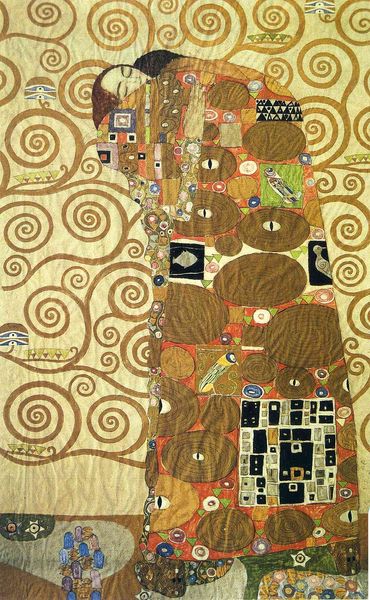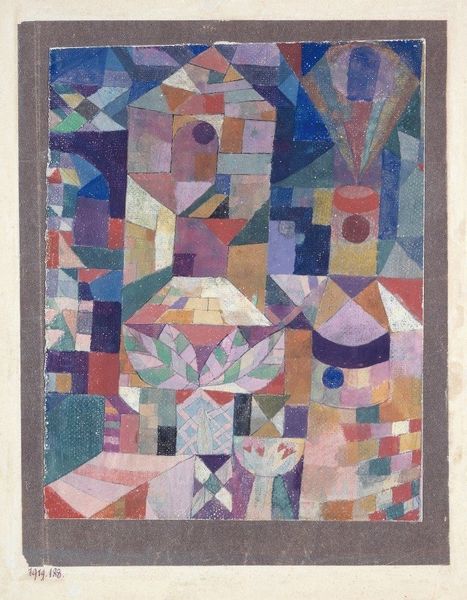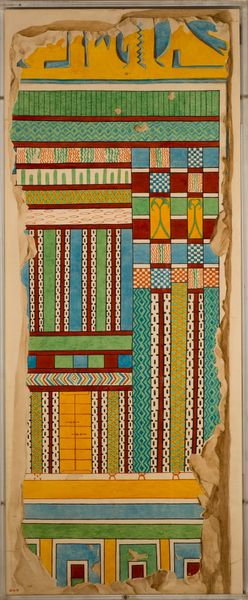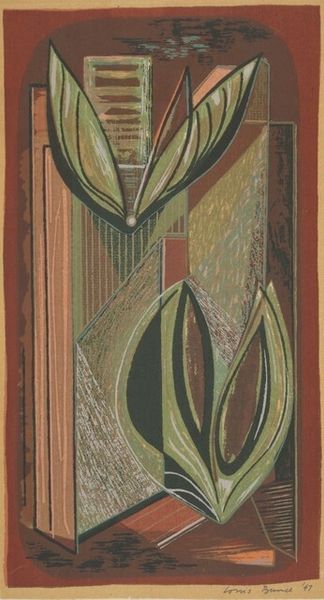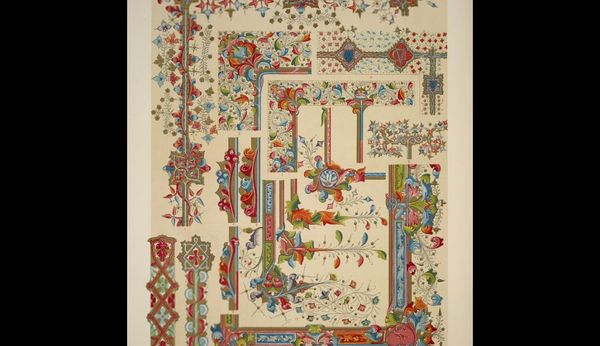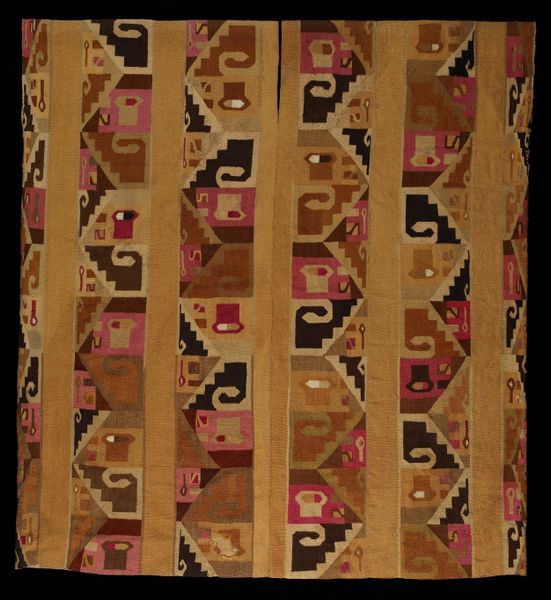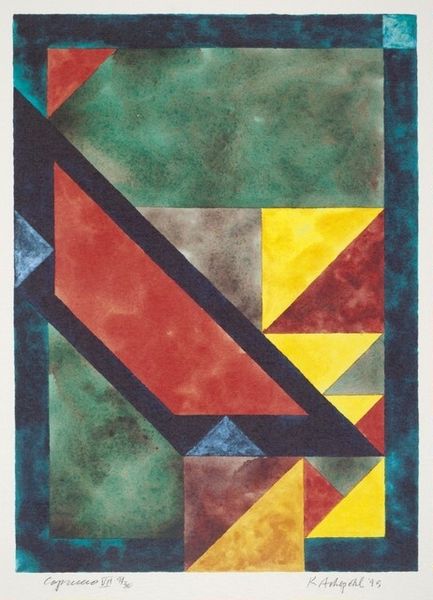
mixed-media, painting, textile
#
portrait
#
mixed-media
#
art-nouveau
#
abstract painting
#
painting
#
pattern
#
textile
#
geometric pattern
#
geometric
#
geometric-abstraction
#
abstraction
#
symbolism
#
decorative-art
Copyright: Public domain
Gustav Klimt made this design for the Stoclet Frieze in Vienna, Austria, around 1908, using a mix of materials including paint, gold, and mosaic. The image is a preparatory design for a section of a decorative frieze, made for a private home. Klimt was commissioned by a wealthy industrialist to produce artwork for the dining room of his mansion. The work shows a stylised knight, an archetypal figure often associated with masculinity and power. The cultural context here is crucial: early twentieth-century Vienna was a complex society. The city was a center for artistic experimentation with many artists questioning traditional values. Klimt himself was an active member of the Vienna Secession, a group that rejected the conservative artistic establishment. How does this frieze embody such tensions? The design combines modern abstraction with historical references. It rejects academic artistic conventions, yet it's also a celebration of wealth and status. To fully appreciate this artwork, one could consult historical archives, studies of Viennese modernism, and critical analyses of Klimt's oeuvre. The meaning of art is always deeply embedded in its social and institutional context.
Comments
No comments
Be the first to comment and join the conversation on the ultimate creative platform.
